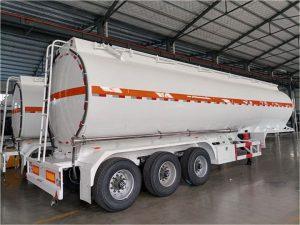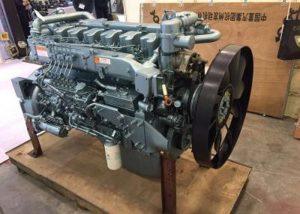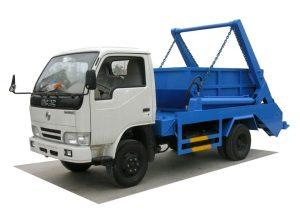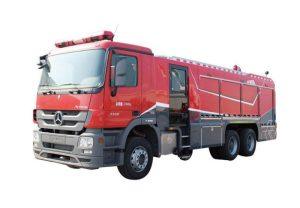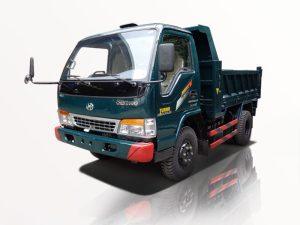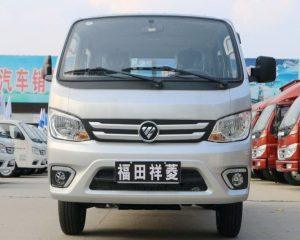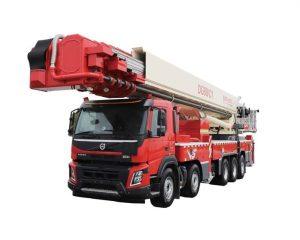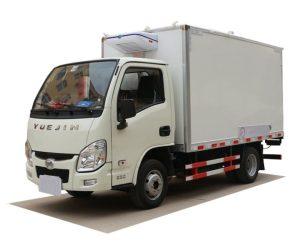Monday to Saturday - 8:00 -17:30
What is PTO in a Truck? Understanding Power Take-Off Systems
Power Take-Off (PTO) systems are vital components found in various types of trucks and heavy machinery, playing a significant role in the vehicle’s efficiency and versatility. This article will delve deeply into what PTO is, its functions, types, benefits, and various applications within the trucking industry. By the end, you will have a comprehensive understanding of PTO systems, enabling you to appreciate their importance and functionality in trucks.
Understanding Power Take-Off (PTO)
PTO refers to a mechanism that transfers power from a truck’s engine to an attached implement or accessory. This system allows the truck to power various equipment directly from its engine without requiring a separate power source. PTO systems are commonly found in specialized trucks used for construction, towing, and other heavy-duty applications.
How Does a PTO Work?
A PTO essentially acts as a connector between the truck’s engine and external equipment. Here’s a simplified explanation of its working mechanism:
- The engine generates power, which is directed to the PTO.
- The PTO engages, transferring this power to the attached implement.
- The implement operates using the engine’s power rather than needing its own separate engine.
Types of PTO Systems
There are several types of PTO systems used in trucks:
1. Mechanical PTO
This type uses gears and shafts to deliver power directly from the engine to the implement. It is typically engaged manually and is known for its reliability.
2. Hydraulic PTO
Hydraulic PTO systems use hydraulic fluid to transfer power. These systems are common in trucks that require high torque outputs, such as tow trucks and refuse trucks.
3. Electrical PTO
This modern variation utilizes electric motors to drive the attached equipment. Electrical PTOs are becoming increasingly popular due to their efficiency and ease of use.
Applications of PTO in Trucks
PTO systems have a wide array of applications, enhancing the functionality of trucks significantly. Below are several examples of how PTO is utilized in different industries:
1. Waste Collection Trucks
In waste management, trucks fitted with hydraulic PTO systems can operate garbage compactors on the rear. The PTO powers the compactor, allowing the truck to compress waste efficiently.
2. Tow Trucks
Tow trucks often use mechanical PTO systems to operate winches and other towing equipment. This allows tow trucks to lift and transport disabled vehicles easily.
3. Dump Trucks
Dump trucks are commonly equipped with hydraulic PTO systems for the operation of hydraulic lifts, enabling the dumping of loads efficiently on demand.
4. Snow Plows
In regions that experience heavy snowfall, trucks with PTO systems are employed to operate snow plows. The PTO powers the plow, allowing for effective snow removal on roads and highways.
5. Agricultural Trucks
Agricultural trucks with PTO systems can power various farm equipment, such as seeders and harvesters, directly from the truck’s engine, thus increasing productivity in farming operations.
Benefits of Using PTO Systems in Trucks
PTO systems offer numerous advantages that make them indispensable in various commercial applications:
1. Increased Efficiency
PTO systems allow a single vehicle to perform multiple tasks, reducing the need for multiple machines and optimizing operational efficiency.
2. Cost Savings
By using the truck’s existing engine power to drive external equipment, businesses can save on fuel and maintenance costs associated with operating separate engines.
3. Simplified Design
PTO systems minimize the complexity of operations by integrating various functions into a single unit. This simplification can lead to fewer breakdowns and less downtime.
4. Versatility
Trucks equipped with PTO systems can be customized for various applications, making them versatile tools in industries ranging from construction to agriculture.
Choosing the Right PTO for Your Truck
When selecting a PTO system for a truck, several factors must be considered to ensure proper functionality:
1. Type of Application
Determine the primary use of the truck. Different applications may require different PTO types (mechanical, hydraulic, or electrical).
2. Engine Power
The truck’s engine capacity will influence the choice of PTO. A more powerful engine may require a heavy-duty PTO system for optimal performance.
3. Compatibility
It’s crucial to ensure that the chosen PTO is compatible with the truck model and any attachments that will be used.
4. Installation Requirements
Consider the installation process for the PTO. Some systems may require specialized installation techniques or tools.
Maintenance of PTO Systems
Proper maintenance of PTO systems is crucial for their longevity and functionality. Here are some maintenance tips:
1. Regular Inspections
Inspect the PTO components regularly for any signs of wear and tear. Look for any leaks in hydraulic systems and check the gears in mechanical systems.
2. Lubrication
Ensure that all moving parts are adequately lubricated. This will help prevent friction-related damage and prolong the life of the PTO.
3. Hydraulic Fluid Checks
If you have a hydraulic PTO, regularly check the fluid levels and replace hydraulic fluid as required to maintain optimal operation.
4. Follow Manufacturer Guidelines
Adhere to the manufacturer’s recommendations for maintenance schedules and procedures. This includes routine checks and servicing measures.
Common Issues with PTO Systems
1. Engaging Difficulties
If the PTO does not engage properly, it could indicate a problem with the linkage or a fault in the clutch mechanism.
2. Noise and Vibrations
Unusual noises or vibrations when the PTO is engaged may suggest misalignment or damaged components within the system.
3. Hydraulic Leaks
Hydraulic PTO systems may develop leaks, leading to decreased efficiency and potential damage. Address leaks promptly to avoid larger issues.
FAQ about PTO in Trucks
1. What does PTO stand for in a truck?
PTO stands for Power Take-Off, a mechanism that allows a truck’s engine to power external equipment without the need for a separate engine.
2. How do I know if my truck has a PTO system?
Check the truck’s documentation or inspect under the chassis. Look for a gearbox or some form of connectivity that leads to external equipment.
3. Can all trucks use PTO systems?
No, PTO systems are more common in specialized trucks, such as tow trucks, dump trucks, and agricultural vehicles, as opposed to standard passenger vehicles.
4. Is PTO maintenance expensive?
While maintenance costs vary, regular maintenance can be cost-effective compared to repairs from neglect. Proper care ensures longevity and efficiency.
5. How much power can a PTO system provide?
The power output from a PTO system depends on the truck’s engine size and specs. Generally, PTOs can safely deliver substantial power suitable for heavy-duty applications.
6. Are PTO systems easy to install?
The installation of a PTO system can vary in complexity based on the type and specific truck model. However, it is often recommended to leave installation to professionals.


